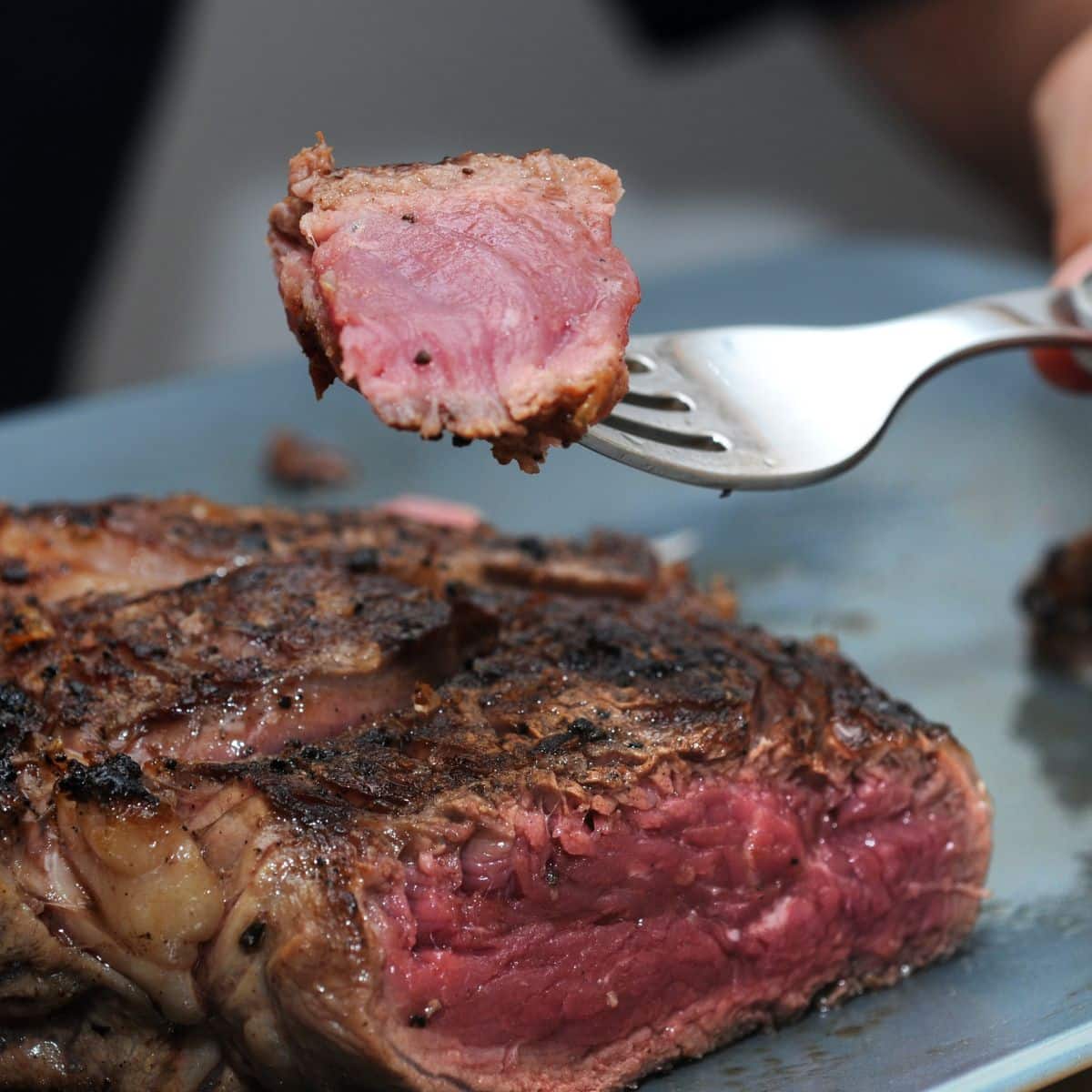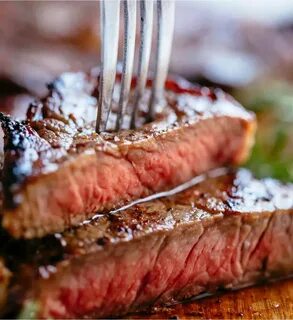There are various levels of doneness when it comes to enjoying a perfectly cooked steak. Blue, black, and rare steaks are popular options for steak lovers. Understanding the differences between these cooking levels is essential for ensuring a satisfying dining experience.
In this blog post, we will know complete detail about Blue, Black, and Rare steaks, along with their differences. Let’s satisfy your curiosity and elevate your steak knowledge with this comprehensive blog post.
Know Everything about- Blue Steak, Black Steak, & Rare Steak
- Blue Steak

Blue steak epitomizes rareness, showcasing a different flavor profile and texture. It is cooked at a low temperature, leaving the interior almost raw. The exterior is lightly seared, enhancing the steak’s appearance. Blue steak is often thicker to retain moisture during cooking, ensuring a tender and juicy bite. It’s crucial to use high-quality cuts like fillet or ribeye for the best results.
- Black Steak

Black steak offers a unique experience with its distinct flavor and appearance. It is cooked on a hot flame, so the outside is charred, while the interior is cool with an inner temperature of around 110 to 120 degrees Fahrenheit. The heat caramelizes the surface, imparting a smoky and charred taste. Black steak is prepared using cuts like strip loin or T-bone, which can withstand the intense heat and maintain their juiciness.
- Rare Steak

Rare steak strikes a balance between tenderness, juiciness, and a touch of pinkness in the center. It is cooked at a higher temperature than blue steak but retains a predominantly rare interior. The exterior is seared to develop a flavorful crust, enhancing the overall taste. Popular cuts for rare steak include sirloin or porterhouse, which offer a good balance of flavor and tenderness.
Differences between Blue, Black, and Rare Steaks
There are various differences to note when comparing blue, black, and rare steaks:
- Cooking Temperature Variations
Blue steak is cooked at an extremely low temperature, typically around 115 degrees Fahrenheit, resulting in a nearly raw interior. On the other hand, black steak is also seared at a low temperature, around 110 degrees Fahrenheit, creating a blackened exterior while keeping the interior rare. Rare steak falls in between, with a slightly higher cooking temperature ranging from 125 to 130 degrees Fahrenheit.
- Texture and Tenderness
Blue steak has a softer and more delicate texture due to its raw interior, offering a melt-in-your-mouth experience. With its charred crust, Black steak uniquely contrasts the crispy exterior and tender interior. Rare steak strikes a balance, offering a slightly firmer texture with a tender center.
- Flavor Profiles and Taste Differences
Blue steak showcases the meat’s natural flavors with a buttery and mineral-like taste. Due to the low searing process, black steak offers a robust and smoky flavor. Rare steak provides a well-rounded flavor, with a balance of meaty richness and a hint of char from the seared exterior.
Discover the Truth: Is Steak Healthy? Read on to Find Out!
FAQs Related to Blue, Black, and Rare Steaks
- Is it safe to eat blue or rare steak?
Ans: While some people enjoy blue or rare steak, it carries a higher risk of foodborne illnesses due to minimal cooking, so caution is advised, especially for vulnerable individuals.
- What are the recommended cooking temperatures for blue, black, and rare steak?
Ans: Blue steak is cooked at around 115 degrees Fahrenheit, black steak is also seared at a low temperature of around 110 to 120 degrees Fahrenheit, and rare steak is typically cooked between 125 to 130 degrees Fahrenheit.
- Can I achieve the same flavors and textures of blue, black, and rare steak at home?
Ans: Yes, by using appropriate cooking techniques and experimenting with cuts, seasonings, and cooking times, you can achieve similar flavors and textures of blue, black, and rare steak at home.
Master the Art: Learn How to Eat Steak with Fork and Knife?
Conclusion:
Understanding the differences between blue, black, and rare steak is essential for steak lovers seeking the perfect doneness level. Each cooking level offers a unique culinary experience, from the delicate and raw nature of blue steak to the charred and smoky flavors of black steak and the balanced tenderness of the rare steak. You can choose the steak that best suits your taste buds by considering factors such as cooking temperatures, textures, and flavors.

